Can you really put live charcoals into a curry?
Is this a living Indian culinary tradition– or just a pile of embers?
And what can YOU do to help keep the flame alive?
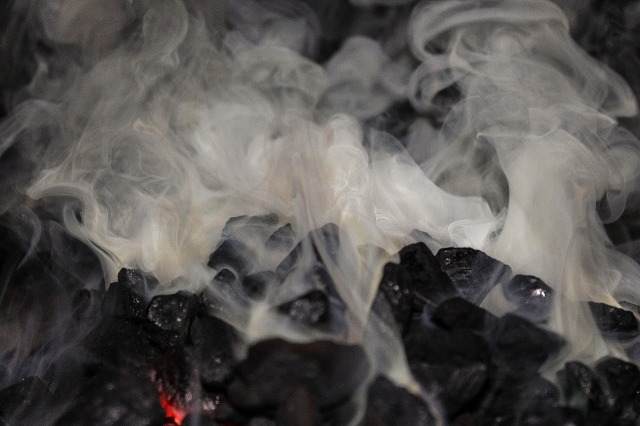
So that’s that… the ambitious curry I’m planning for my daughter’s dinner party is NOT going to work.
I’m talking to sharply-dressed colleague and fashion blogger Gurjeet – and he has feedback for me from a lifetime curry expert.
“She’s never heard of this technique – and she says it won’t work.”
The ‘she’ in question is Gurj’s Mum.
I know enough about curry to realise that Indian Mums are the gatekeepers of the country’s cuisine. In the centuries before recipe books and fast food, they passed the flame from generation to generation – creating the techniques and recipes which shape India’s culture. Indian Mums are the country’s culinary DNA.
So when an Indian Mum tells me a recipe won’t work – I’m listening.
But I’ve promised this specific dish to my daughter and four of her friends, as they celebrate the last week of summer before going back to university. I’ve promised them a recipe where we plunge a red-hot charcoal into the curry… and watch smoke infuse the dish.
If it works, it will be pure foodie theatre.
But to even have a chance of succeeding, I need to remember where I found the recipe.
This is trickier than it may sound.
On the shelves in our kitchen, there are over 100 Indian recipe books. At a conservative estimate, that means a library of at least 10,000 recipes. Looking at the books, I have a vague memory of turning a page and finding a recipe for smoking charcoal – but I have no idea where it is.
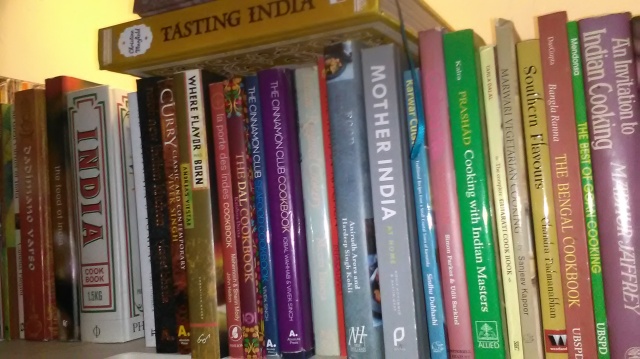
No sweat.
Like every modern quest for knowledge, there’s the internet.
A few minutes later, a search for ‘cooking with charcoal’ has given me 28 million results. The trouble is that Google assumes ‘cooking with charcoal’ means using it as a heat source – not an ingredient. I have millions of suggestions about how to cook food over charcoal, and precisely zero about how to cook charcoal in food.
No matter. I refine the search to ‘charcoal in food’. 19 million results – and it just gets weirder. I meet people who add powdered charcoal to their food to get healthier, and others who tell me that if I do this I will die.
For half an hour or so, I try every possible search combination I can think of for charcoal/ food/ smoke/ Indian/ recipe.
For the first time ever, the web fails me totally. The thing I’m looking for does not exist in cyberspace.
The voice of Gurj’s Mum rings in my ears.
THIS.
WON’T.
WORK.
I go back to analogue. I will have to find the recipe in one of my cookbooks.
It’s Saturday morning. My daughter and her friends come to eat this evening. I look at the bookshelves, and am consumed by panic. There’s about two metres of curry literature… I’m searching for a straw in a culinary haystack.
I make two piles of books – each about the height of a toddler: Pile A contains the cookbooks which I know really well, and where the recipe definitely won’t be; Pile B has the books I know less well, and where it might be.
For stability, Pile B builds upwards – biggest books at the bottom, smallest at the top. I skim through the pocket-sized books. Nothing. I work my way through the paperbacks (mostly Penguin India). Nada.
Which is when I ask myself… did I just dream about this recipe?
It’s happened before. I was once convinced I’d found a recipe for curried drumstick – spread on toast. It sounds delicious, but I’ve never been able to re-find it. It probably doesn’t exist.
The voice of Gurj’s Mum is now turned up to 10 in my head as I come to the coffeetable books at the base of the pile. Last and biggest of all is Christine Manfield’s magisterial Tasting India.
And as I reach page 133, my head explodes. There it is: Dry Lamb Curry, Gosht Kandahari. The text at the top of the page reads: “Adding the dhuni, a piece of hot charcoal that imparts the aromatic smoky flavour, is the magic ingredient and a really neat trick.”
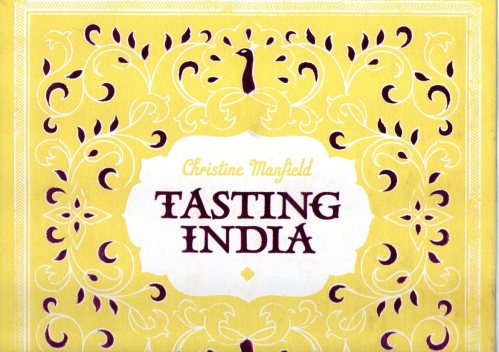
I am in business.
Kind of…
As I read down the list of ingredients, I realise this may be the weirdest curry I have ever attempted. First ingredient: 300g dried pomegranate seeds. 300g! A pack of 100g of anardana normally lasts me for six months – and I’ll use three times that in one dish? Fifth ingredient: 100g of Kashmiri chilli. 100g – an entire pack, for a spice I normally add in 5ml teaspoonfuls! Eighth ingredient: 30g of long red chillies.
What is Christine trying to do to me? Is this a curry, or a weapon of mass destruction?
No matter. The show must go on.
I shop for ingredients. Amazingly, my local Indian retailer in Salisbury actually stocks the industrial quantities of anardana and Kashmiri chilli I need. But it gets trickier when I go to a hardware shop for the charcoal – there are so many types to choose from: briquettes; high-heat briquettes; self-lighting lumpwood; natural lumpwood.
The briquettes look too industrial to add to food; the self-lighting stuff stinks of paraffin. I opt for natural lumpwood. The smallest bag weighs 5kg, and I calculate on the way home that if this recipe works (if) I have enough charcoal to re-do it 5,000 times.
Show time.
Before I cook a thing, I want to rehearse the charcoal finale. Christine Manfield is crystal clear: “To prepare the dhuni, heat a piece of charcoal over a flame until it is red, then dip the charcoal in a little oil and drop it into the lamb curry.”
She is spot on.
Held in a pair of tongs over a gas flame, the charcoal takes about five minutes to turn from black to grey – then glow red hot. When it does, I take it into the garden (smoke alarm/ fire risk) and dip it nervously into a ramekin of cooking oil. The second the charcoal hits the surface, it gives off a plume or curling, white aromatic smoke.
It’s the dry-ice of Indian cooking. I am thrilled.
Several hours later, my daughter and her friends rock up at our house for dinner. The curry is a pit-stop on a day that started at lunchtime and will spill over into the next morning. To my astonishment, they are excited about the charcoal curry – and up for helping to cook it.
I am so fazed by the day’s recipe-hunting, and by the weirdness of putting nearly half a kilo of dried spices into a single dish – that my palate is shot. I just can’t taste what I’m cooking.
But the dhuni comes up trumps.
The friends take it in turns to braze the charcoal over the flame. The moment it’s dunked in oil, it throws off a column of smoke – all the way to the curry pot – where it sizzles aromatically. We pop on the lid.
Someone has filmed the moment on a phone, and it’s very pretty.
Ten minutes later, we eat the smoke-infused Gosht Kandahari together – and everyone at the table says it’s delicious.
Happy days.
The date of the dinner was August 29th, 2016 BC (Before Charcoal).
Since then, life has fed me more morsels of knowledge about the dhuni.
From knowing absolutely nothing about this obscure technique – I might now own more published fragments on the dhuni than almost anyone. Maybe?
And without wanting to, I seem to have become one of the guardians of this (tiny) eternal flame.
I feel a duty to help keep the dhuni alight.
So here’s what I’ve learnt since that first day…
In the impossibly rare Indian Muslim Cookery – a four volume masterpiece, kindly sent to me from Mumbai by food blogger Antoine Lewis – there’s a tantalising recipe for Khichda with: “5/6 pieces of burning coal.” The directions state: “Heat ghee in a pan, add cumin seed, fenugreek seed, burning coal. Then add them in the mutton vessel. Remove the coals after sometime and serve.”
As well as being impossibly hard to buy (I can find no trace of this book online – and might own the only copy in the UK) it’s also a learning curve to work from. The book reads right to left, and some terms are unfamiliar (“Onion: make barista”). Would FIVE lumps of coal really work? Do they mean coal or charcoal?
For all my quibbles, I’m desperately proud to own this box set of Bohra/ Kashmiri/ Kokani/ Memon recipes – and will definitely cook the Khichda one day.
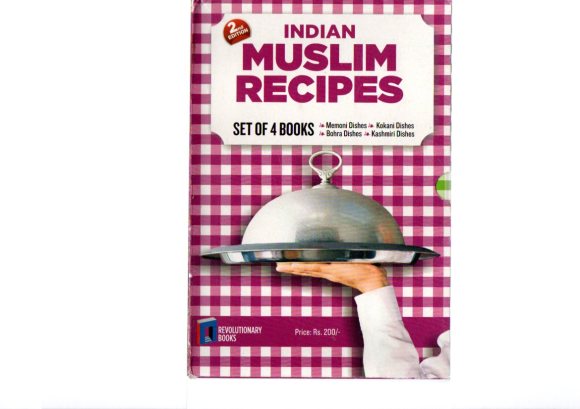
At one of Asma Khan’s legendary pop-ups at the Cinnamon Club, I had the privilege to meet Pushpita Singh – and get a signed copy of her Rajasthani Kitchen.
Tucked away on page 93 of her excellent book, there might be more information about the art of cooking with smoke than in the rest of Indian cookbooks put together:
“SMOKE – the process of imparting a smoked flavour to the preparation. Heat a piece of coal over the flame until it becomes red hot. Overlap 2-3 onion peels to form a small cup. Place it in the middle of the dish, with the preparation to be smoked. Place the coal in the onion peel cup. Smoke with either of the following…”
Over half a page, Pushpita goes on to explain how cloves, garlic paste or clarified butter can each be poured over the smoking coal – to take the flavour to the next level. This is seriously delicious stuff, and I urge you to buy the book. Pushpita Singh is the Michelangelo of smoke cooking – and I salute her.
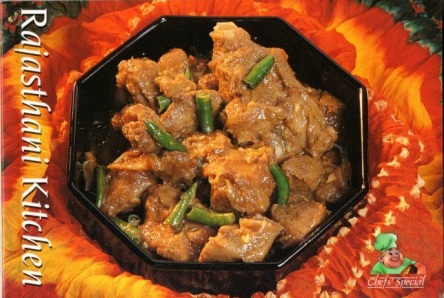
(After I’d read Rajasthani Kitchen, I happened to see the 2016 game menu for the Cinnamon Club – featuring ‘clove smoked grouse’. I’ve had the privilege of eating Chef Rakesh Nair’s game cuisine before – and would be humbled if he could share the secrets of this dish.)
And finally, because the curry journey never ends, the postman brightened up my life this week with a brand new copy of Sumayya Usmani’s sensational Summers Under the Tamarind Tree. It’s a genuinely beautiful book, full of inspirational recipes. And in the very week I find myself writing about the dhuni… Summaya tell me on page 23 that: “[smoking] is my favourite cooking method”. She goes on to share details of the smoking process, as well as a recipe for bihari kebabs. I urge you to to buy the book. I’m glad I own a copy (and slightly baffled about the timing of its arrival… as if some unseen hand is feeding my hunger for smoke).
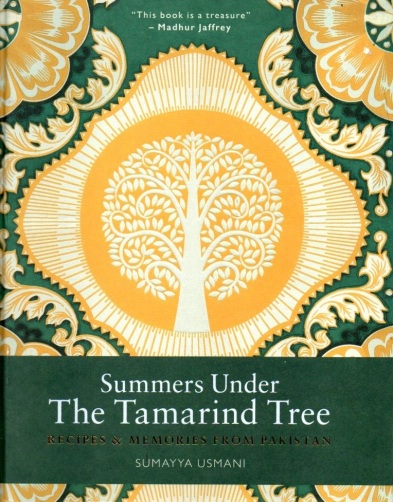
In terms of printed evidence of the smoking technique in Indian cuisine – these three books, together with Tasting India – are the only copies I’ve held in my hand.
Back to the web.
Armed with the word ‘dhuni’ from Christine Manfield, I reckon I’m going to be able to refine my online search – and get more information.
It’s a bit of a surprise.
For the entire first page of returns, Wikipedia defines the Dhuni as: “a sacred site represented as a cleft in the ground. This cleft is emblematic of the yoni or female vulva and generative organ.”
No mention of cooking.
I wonder if Christine Manfield has been had – if some wise-cracking Indian chef or translator has fed her the wrong word in Hindi, just to see if it ends up in print?
I search on. To my relief, among the 78,000 search results on dhuni, pages 5 and 6 on Google bring it back to food: an interesting foodie blog site The Picky Bowl has a post on what looks like a sensational Dhuni Wale Rajma; while has Saransh Goila’s epic foodie travelogue India on my Platter has a Dogri recipe for dhuni using mustard oil. I have ordered the book, and can’t wait to hold it.
And that – as far as I can tell – is it.
Five books, and one blog site, which contain all recorded human knowledge of the dhuni.
I’m sure there’s more, and I look forward to discovering it.
I offer this post as work-in-progress on the dhuni. Indian cooks have taught me so much; this post is my modest research into a little-known technique – to celebrate the dhuni… before it goes up in smoke.
What can YOU do to keep the flame alive?
- Buy one of the books I’ve listed… or email me, and I’ll share any of the recipes I have.
- Buy a bag of lumpwood charcoal… or call me, and I’ll send you some of mine.
- Above all… invite friends over, roast a piece of charcoal to red hot – dip in oil – and infuse your curry with the heady aroma of smoke.
And my thoughts for Gurj’s Mum?
- First: you’ve brought up a great son.
- Second: your curry knowledge is 1,000 times greater than mine, or more.
- Third: but the ‘dhuni’ works, trust me.
Thank you…
This post was made possible with the help of the following people:
Mia – and her lovely friends Ed, Helen, Kaye and Sam

Hi Hog, just wanted to say thanks ever so much for inviting us round to try this, it’s a technique I’ve never seen before or since and to have it performed (since it really was a kind of performance art in a way) for us was really special. I’ve got very fond memories of the dinner party, it was a lovely evening, and hope you’re well 🙂
Hi Sam – it was really great to see you all… and a big thank you for helping stage manage the ‘performance art’. We have new recipes at the edge of the known curryverse – a marinade with rose petals – and we’re hungry to get you all back for more. Thanks so much for coming, for your kind words, – and Sue and I look forward to seeing you very soon. I’ll ask Mia to plan.
Hi
Could you please let me know where one can purchase the box set of Bohra/ Kashmiri/ Kokani/ Memon recipes ? Also please provide me the publisher & ISBN # info. Thanks.
Hi, thanks for your interest! The box set of Bohra/ Kashmiri/ Kokani/ Memom recipes was a one-off from the Midday publishing house in Mumbai. I got my copy from a member of the Food Bloogers of India – I sent him a copy of a UK recipe book, in return. I have never seen a copy for sale. My copy is now in storage (moving house), so I can’t send you the ISBN number. So sorry!